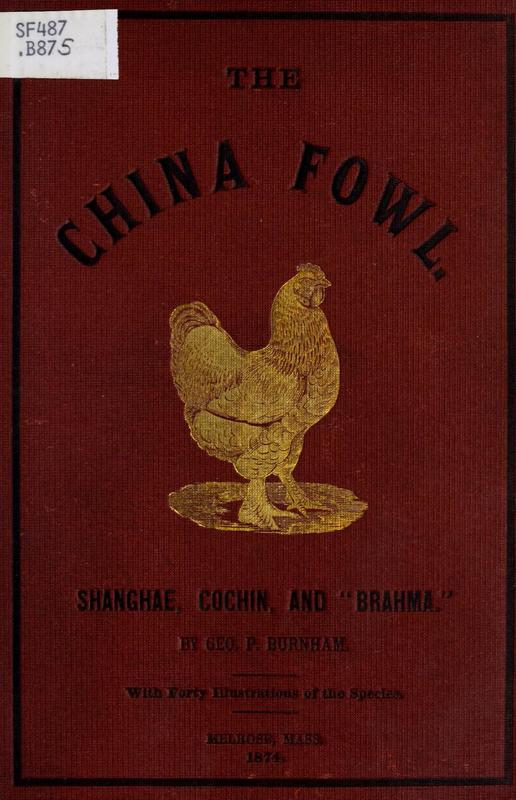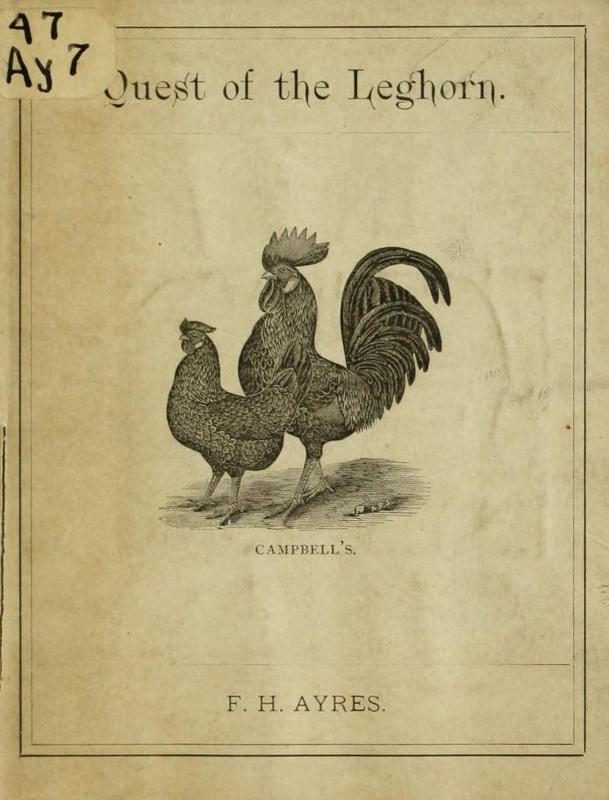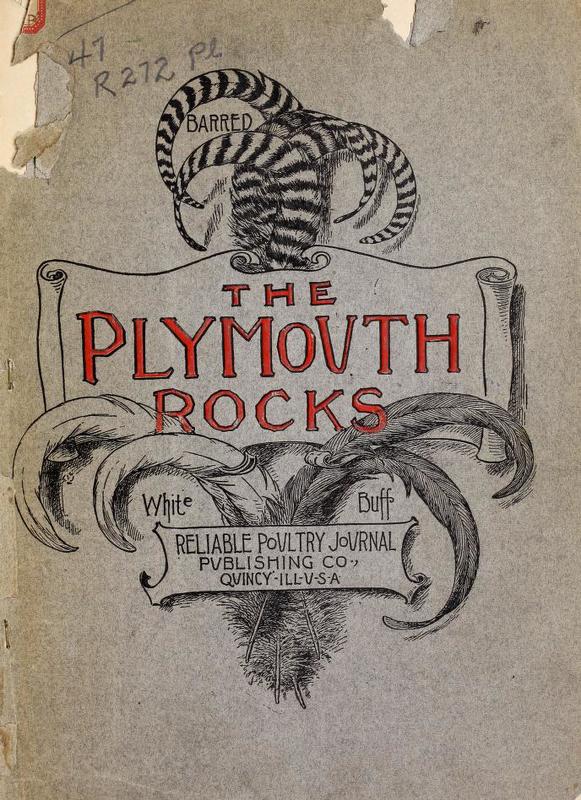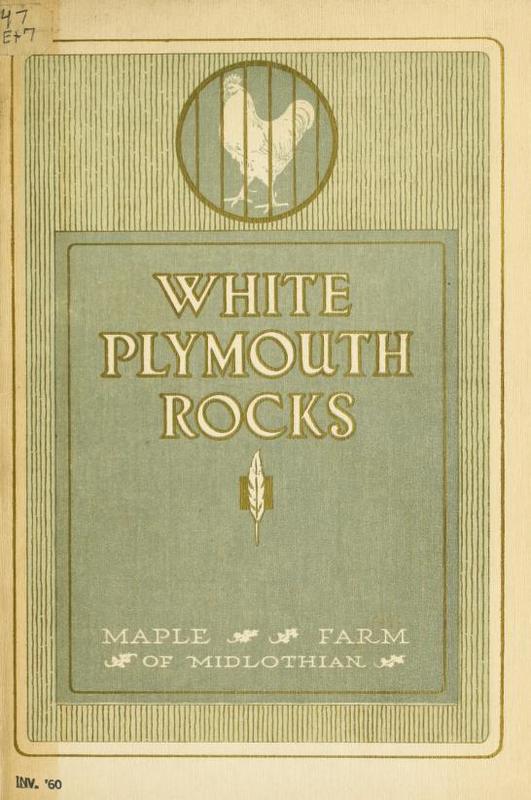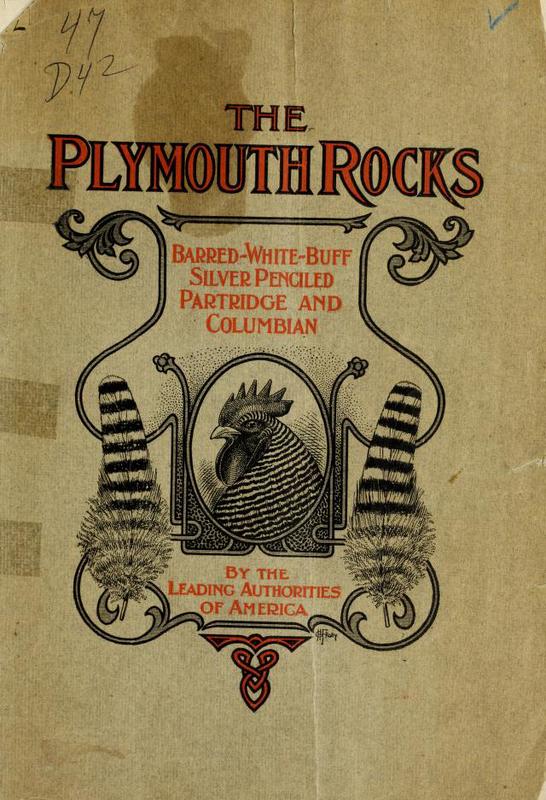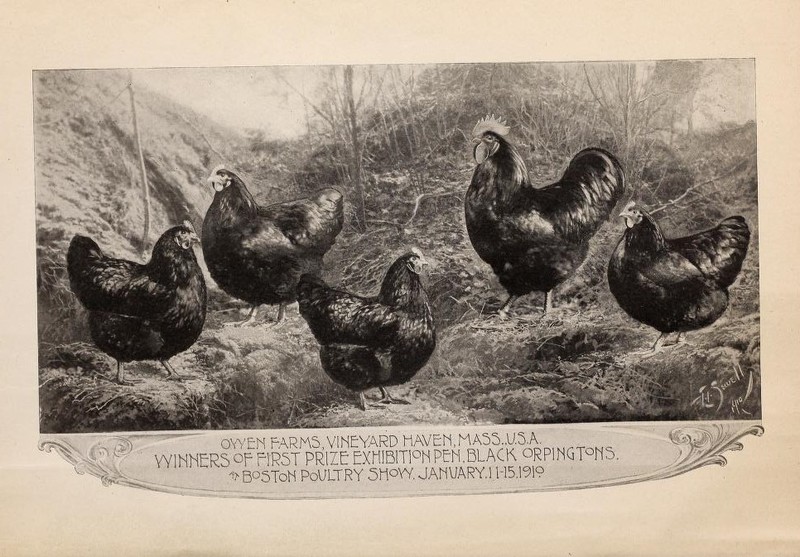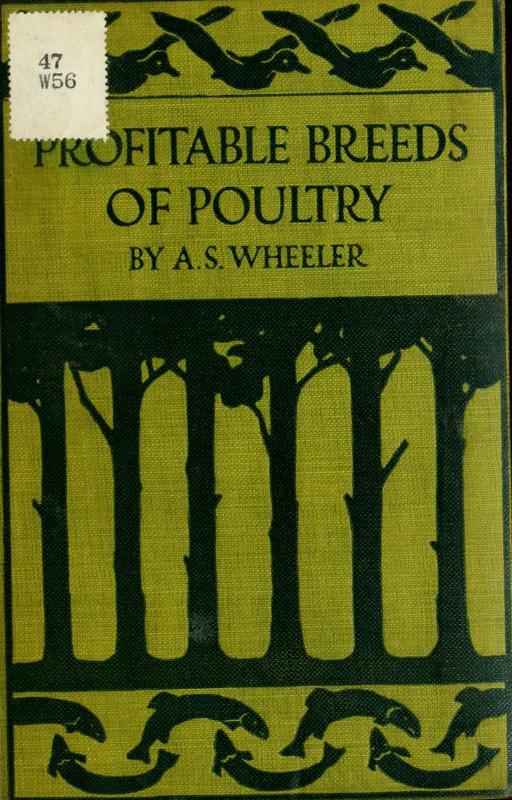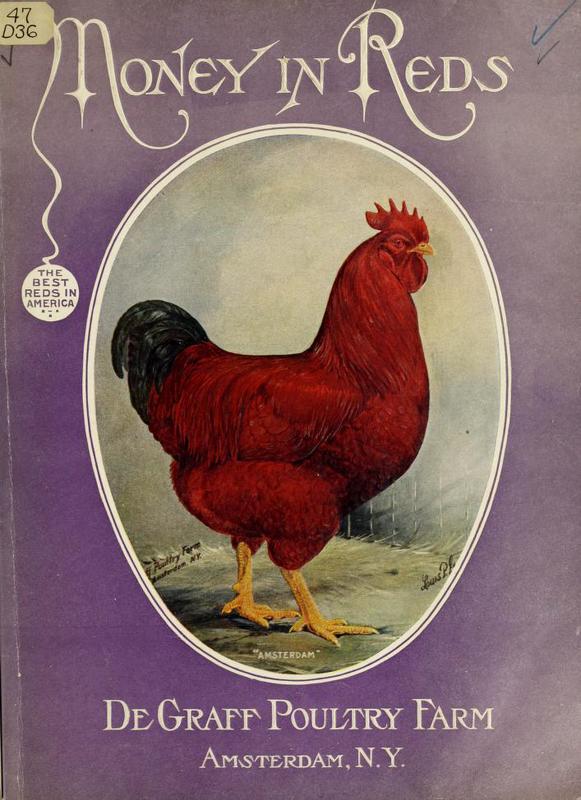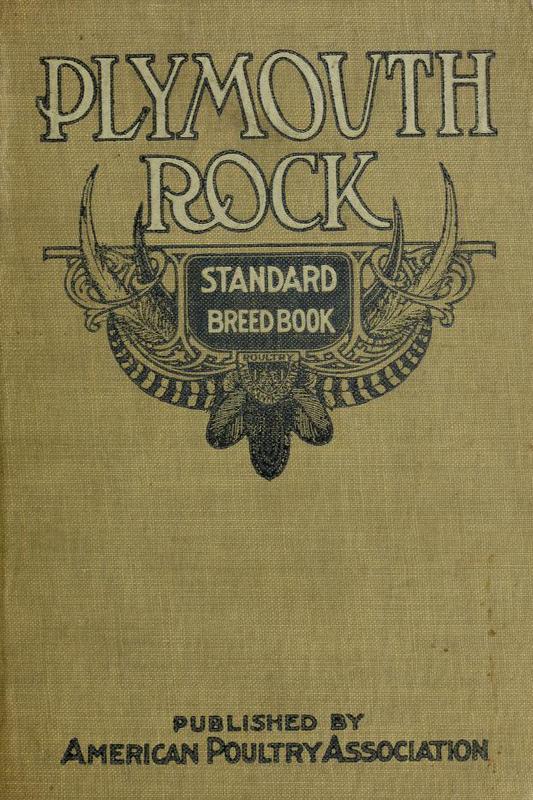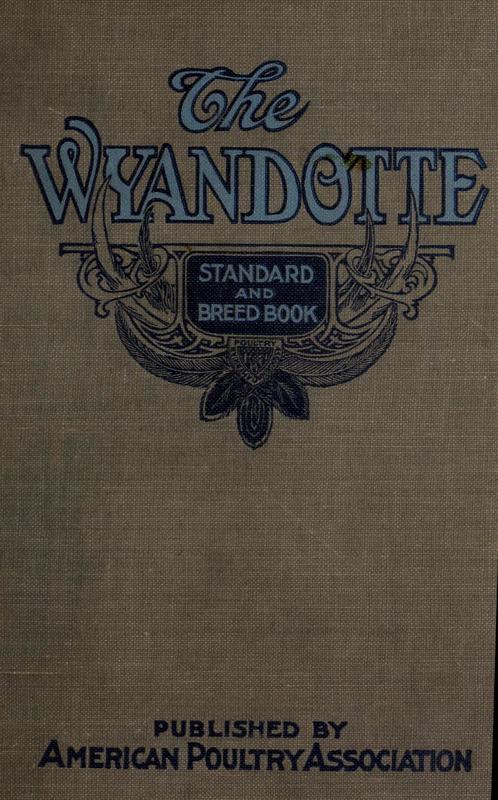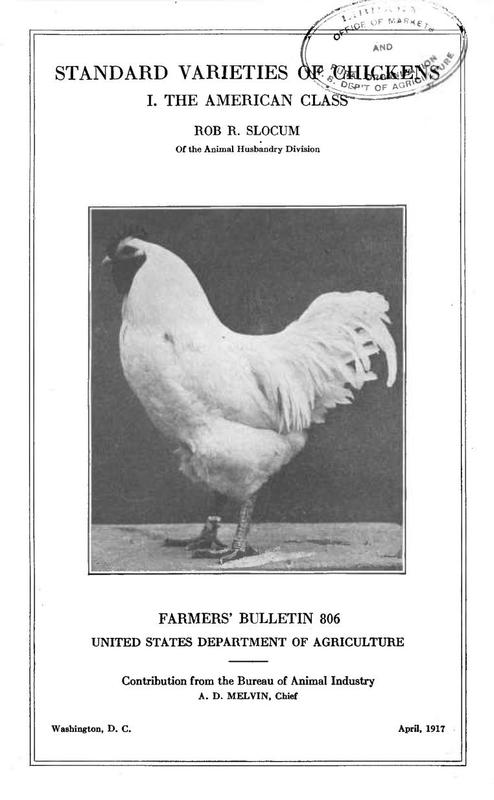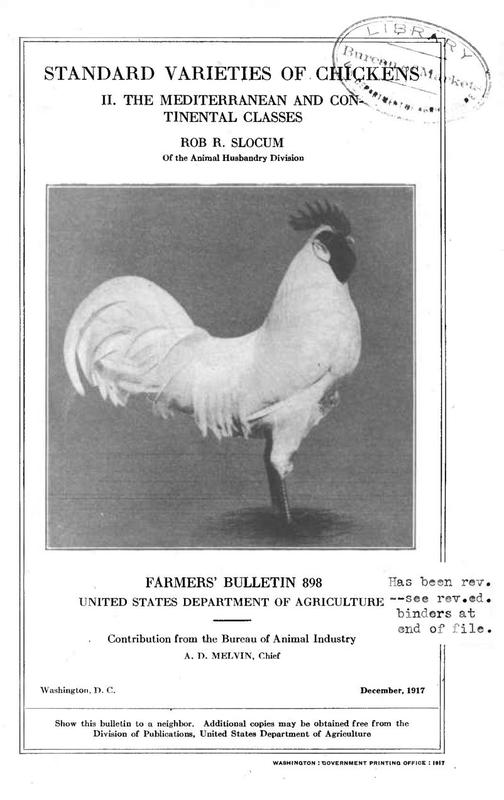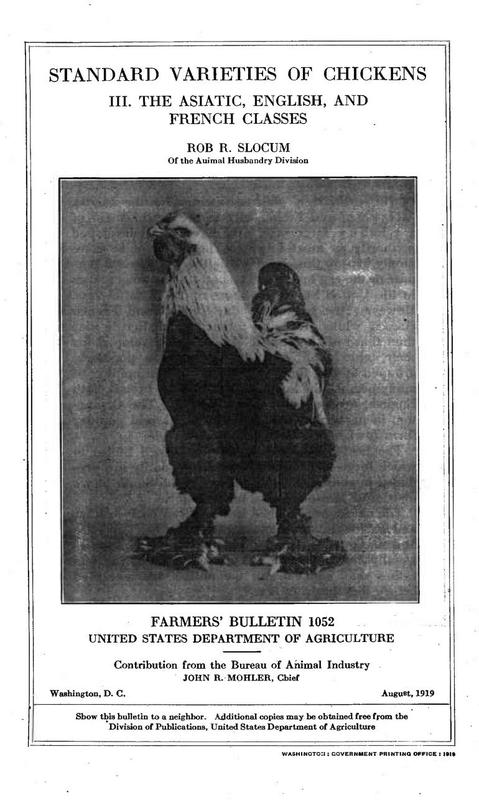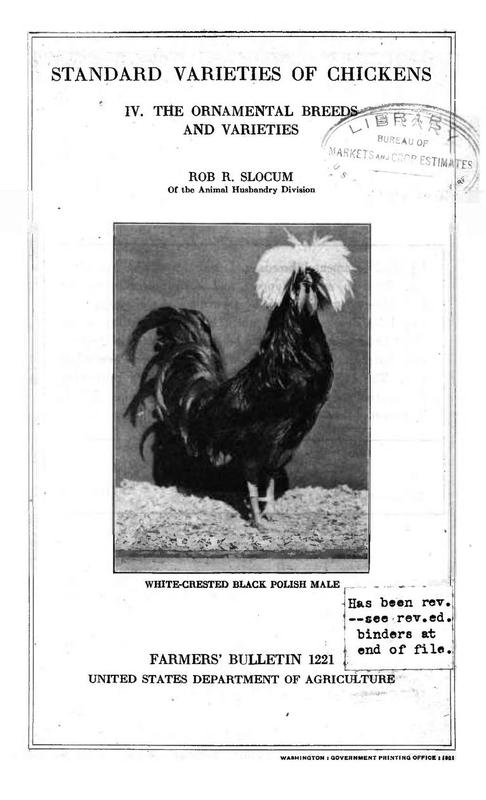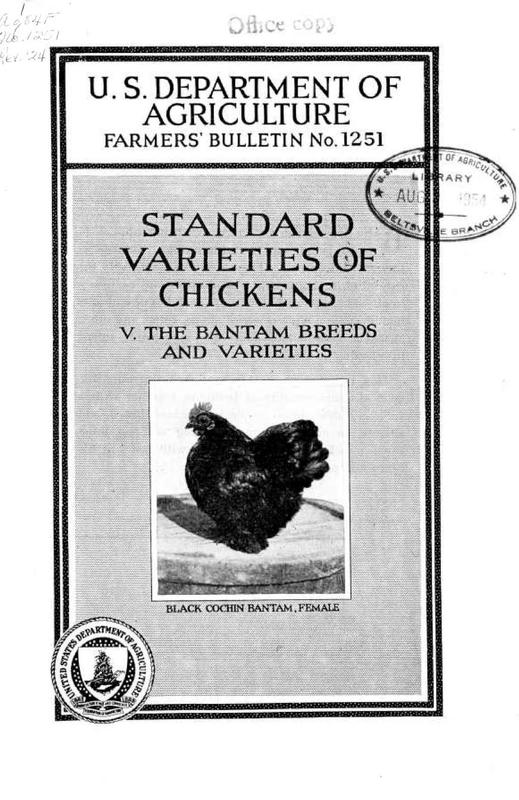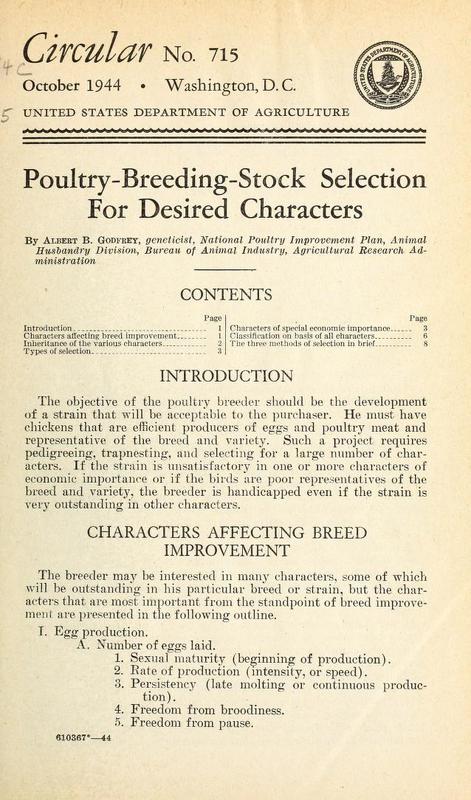Poultry Breeding
The goal of successful poultry breeding has shifted through time. The first chickens were bred for their ability to perform activities that had little to do with food production. Skinner's history of breeds identifies chickens used for cockfighting as being historically the most valuable until the early nineteenth century (1974). Chickens bred for their appearance and performance in poultry exhibits were also more valued than the lowly birds used for meat and eggs.
When Robert Frost was farming and writing his stories there was a serious effort among the professional press and the agricultural research community to broaden the focus to those breeds designed to fulfill purely agricultural ends.
The following materials cover many apects of different chicken breeds. Other issues related to the results of breeding are covered in the Fancy Chickens and the Egg Production exhibits.
The China Fowl: Shanghae, Cochin, and "Brahma"
Burnham, George Pickering, 1874
"This volume is written with two specific purposes in view: first, to give a brief and succinct account, as far as the record permits, of the introduction into America of the Chinese varieties of domestic fowls, subsequently to the appearance of this notable race of poultry in England (in 1843-44) ; and secondly, to correct the numerous errors and false theories that have obtained, both in this country and in Great Britain, touching the origin and establishment of the most noted of modern gallinaceous breeds, first known on both sides of the Atlantic, as the reliable records show, to wit, the " Gray Shanghaes; " or, as they are latterly denominated by common consent, the Light and Dark 'Brahma' fowls."
The White Leghorns: From the Shell to the Exhibition Room
Stoddard, Heather Hudson, 1879
"Never, in all our experience at poultry exhibitions, have we seen a finer display of one breed of fowls than on an occasion lately. We visited a friend of our youth. Entering the well-kept grounds, we were enchanted with the display of flowers, shrubs, beautiful trees, sparkling fountains, fine statuary, — all the creations of wealth and taste. Passing through the garden we entered an enclosure, closely shaven, a velvety lawn, having a small fountain, with here and there a shrub; on the green grass, one cock with six White Leghorn hens — the cleanest, whitest and fairest of the breed. We turned to our host and said, " How do you manage to keep the fowls so white and their yard so neatly?" "Oh," said he, "they come out here one hour a day to take their constitutional; the gardener keeps them clean, and gives them insects. By the way, are you not going to give us a book on White Leghorns?" "Certainly," was the reply. And here we dedicate to our friend of the green lawn the result of our effort."
The Quest of the Leghorn. A Book of Few Theories, Many Facts
Ayers, F. H., 1880
"This little work makes no claim to special literary merit, nor to interest, save that which must attach to the mere recital of facts hitherto unknown to American fanciers. We have aimed throughout to give facts and let them stand without much help from preconceived theories. As we would write to a friend the account of what we learned, we have written for the inspection of the poultry fraternity."
The Leghorns: Brown, White, Black, Buff and Duckwing: An Illustrated Leghorn Standard, With a Treatise on Judging Leghorns, and Complete Instructions on Breeding, Mating and Exhibiting
Reliable Poultry Journal Publishing Company, 1904
THE LEGHORNS— INTRODUCTORY
"A Favorite Family Fowl, That Is Equally at Home on the Farm and in the Show Room—A Glance at Their Present Standing, With a Few Remarks on Type and Color—The Standard Down-to-Date—Browns, Whites, Blacks, Buffs, Duckwings.
Leghorns, figuratively speaking, cover the earth. Take the world over, and Leghorns, perhaps, are better known than any other existing breed. Games may be more widely known, but further than the knowledge that a Game is a Game (and in most minds a Pit Game at that), the average man or woman knows little of its characteristics, inquiry into these points being left to the fancier. On the other hand, go into the smallest village of Europe or America and the Leghorn will be found crowing as cheerily, strutting as proudly, and flying the fence as aggravatingly as here in the center of chickendom. and every man, woman and child will tell you these are some of its characteristics and will add with the greatest assurance — 'it is the best layer on earth.'"
The Plymouth Rocks: Barred, White, and Buff. Their Practical Qualities, The Standard Requirements, How to Judge Them, How to Breed and Mate for Best Results
Reliable Poultry Publishing Company, 1906
"The interest in Plymouth Rocks is almost worldwide; no other fancy fowl has awakened so much enthusiasm. To perfect and beautify it, more continuous hard labor has been performed and more profound study given than has ever fallen to the lot of any other variety of fancy fowls. Theories have been evolved and almost as often exploded. Yet, one point seems to have been lost sight of, and that is the necessity of learning the history of the origin and early breeding of this fowl, which enjoys the greatest popularity from shore to shore and from bay to gulf."
Maple Farm of Midlothian: Specialty Breeders of White Plymouth Rocks of Quality and Usefulness
Ettinger, C.D., 1910
"When you buy a bird, eggs for hatching or Baby Chicks you want all that you pay for. We intend to give every purchaser of poultry from this farm a square deal and we guarantee to live up to the rules of our catalog at all times.
Don't ask us to break our rules; you should know before you entrust us with your confidence and money what you will get for it. We guarantee to satisfy you on any purchase made here, but you should not expect a $15.00 bird for $5.00, and don't lay the blame on us if the lamp goes out in the brooder or incubator, or the hen leaves the nest.
We desire to use this medium to express to our friends our appreciation of their liberal patronage, and respectfully solicit a continuance of same."
Standard-Bred Plymouth Rocks, Barred, White, Buff, Silver Penciled, Partridge and Columbian; Their Practical Qualities; How to Judge Them; How to Mate and Breed for Best Results
Denny, William Charles, 1911
"This breed book, devoted to the Plymouth Rocks, is the sixth edition of one of the most popular books on poultry ever printed. Realizing the wonderful improvement made in Standard Plymouth Rocks since the last edition was printed in 1906, the publishers deemed it advisable and necessary to produce an entirely new and greatly enlarged book in order to meet the demand for a breed book of the highest class in both text and illustrations. This work was begun three years ago, neither time nor expense being spared to secure the best articles on mating, breeding and exhibiting Plymouth Rocks of all varieties by America's foremost poultry breeders and judges. Illustrations costing thousands of dollars have been prepared by the world's greatest artists for this new edition of 'The Plymouth Rocks.'"
Standard-Bred Rhode Island Reds, Rose and Single Comb: Their Practical Qualities, The Standard Requirements, How to Judge Them, How to Mate and Breed for Best Results
Hale, Dwight Edward, 1911
"If ever a breed has been blest by being pushed by a loyal lot of fanciers and breeders, it is the Rhode Island Red. These same breeders tell us the breed itself has won its own popularity and overcome almost insurmountable obstacles in the way of prejudice, etc., by its grand utility qualities.
American breeders have in the past originated and perfected two grand breeds, viz., the Plymouth Rocks and the Wyandottes — both of them great favorites. To produce another breed that would possess the grand utility qualities of these two and also prove popular as a fancier's fowl seemed a herculean task but our New England fanciers and breeders, showing the indomitable spirit of their forefathers and being ably assisted by breeders in other parts of the country, went at the task knowing they had a fowl that would meet all the requirements of both the utility and the fancy in this country."
Standard-Bred Orpingtons, Black, Buff and White: Their Practical Qualities; The Standard Requirements; How to Judge Them; How to Mate and Breed for Best Results, With a Chapter on New Non-Standard Varieties
Drevenstedt, John Henry Editor, 1911
"This breed book, devoted to the Orpington race of domesticated poultry, is the first and most complete of its kind published in America. England has produced many Standard-bred varieties of superior merit and surpassing beauty in the past, but we have no hesitation in stating that its newest production, the Orpington, is the most universally popular breed ever originated in Great Britain. Not only in England, but in Australia, Canada, and the United States as well, are Orpingtons enjoying unbounded popularity. The intrinsic merit of the Orpington fowl for utilitarian purposes, its commanding size and solid type, combined with beauty of plumage, are invaluable assets that assure its permanent popularity."
Profitable Breeds of Poultry
Wheeler, Arthur S., 1912
"CHAPTER I STOCK — GOOD AND BAD
In making a start with poultry, to select a good breed and, within that breed, the most suitable variety, is important. The statement reads tritely, but the truth involved is often hidden from the beginner. Since poultry-raising may be entered into, on a small scale, with little capital, and since accounts of big profits made by it appear frequently in print, it appeals to many persons who have slight business experience and no special information. One novice commences with the idea, acquired from some battered human almanac, that scrub hens are as good as any; another goes for instruction to the nearest owner of fowls, whose knowledge may be very limited. Another, who would discount a neighbor's advice as prejudiced, pays a large price blindly to a stranger, on the strength of a noisy advertisement."
Money in Reds. De Graff Poultry Farm. Amsterdam, N. Y.
De Graff, Edward Teller, 1913
"In preparing my 1913 catalogues, I have tried to give you as true an idea of this farm, the quality of Red stock raised here and my methods of caring for them, as the limited space will allow. I will prove to your perfect satisfaction that the matter of distance makes no difference in shipping eggs or stock, when properly handled, as I show by testimonials that I have shipped to over half the Earth with perfectly satisfactory results, so that I feel safe in saying I could guarantee delivery to any civilized country of the world.
My poultry business has grown to such magnitude that in 1908 I resigned from the Farmers National Bank, which I had been connected with for 20 years, that I might give this business my undivided attention. My plant represents the results of years of hard work, unlimited expense, and careful study, in building up this strain of fowls, which I have through live advertising, made known all over the World, as 'DeGraff's Vitality Reds,' 'The Best Reds in America' and 'The Greatest Utility Fowls on Earth.'
The Plymouth Rock Standard and Breed Book
Smith, Arthur Carlton, Editor, 1919
"A Complete Description of All Varieties of Plymouth Rocks, With the Text in Full From The Latest (1915) Revised Edition of the American Standard of Perfection as it Relates to All Varieties of Plymouth Rocks. Also, With Treatises on Breeding, Rearing, Feeding, Housing, Conditioning for Exhibitions, Exhibiting--etc."
The Wyandotte Standard and Breed Book: A Complete Description of all Varieties of Wyandottes
Nourse, W. A. , Editor, 1921
"For a number of years there has been a growing demand among poultry breeders for the publication by the American Poultry Association of what are popularly known as Separate Breed Standards — a series of books each one containing the official Standard description of a single breed, and in addition, reliable and authoritative information in regard to the actual breeding of such fowls.
This work the Association undertook and published the Plymouth Rock Standard and Breed Book, the first of the series, which was promptly followed by this, the Wyandotte Standard and Breed Book, the second in the series."
Standard Varieties of Chickens: I. The American Class
Slocum, Rob R., 1917
"The American class includes the Plymouth Rock, Wyandotte, Java, Dominique, Rhode Island Red, and Buckeye.
The fowls of these breeds are commonly called general- purpose fowls, because they are not only good egg producers but their carcasses are also well suited for the table. They are therefore the breeds best suited for the general farm flock, and include some of the most popular and widely kept varieties of chickens. They are in good favor with the poultry packers on account of their table qualities."
Standard Varieties of Chickens: II. The Mediterranean and Continental Classes
Slocum, Rob R., 1917
"IMPORTANCE OF EGG PRODUCTION.
EGG production doubtless is the leading branch of poultry keeping, and, in addition, is a very important agricultural activity. According to the last census the eggs produced in the United States in 1909 numbered more than 1,591,000,000 dozens, with a value of more than $306,000,000. Eggs, of course, are produced wherever chickens are kept, and by far the greater part of the egg crop comes from the general farm, yet large so-called egg farms have been developed with the main purpose of producing eggs for market. The largest of these egg farms and the greater number of them are located near markets which pay a premium for white eggs; and for this reason, together with the fact that eggs are primarily desired, the breeds kept are those known as the egg breeds, such as the Leghorn, Campine, Minorca, and Ancona. The Single Comb White Leghorn is undoubtedly the most popular and the most widely kept variety of the egg breeds. These breeds comprise the Mediterranean and Continental classes, as given in the American Standard of Perfection."
Standard Varieties of Chickens: III. The Asiatic, English, and French Classes
Slocum, Rob R.. 1919
"THE BREEDS of chickens included in the Asiatic, English, and French classes are in the main of a relatively large size, and have been developed primarily as meat breeds. They are not so commonly kept in this country as either the general-purpose or the egg breeds. The best-known meat breeds in the United States are those of the Asiatic class. However, the breeds of the English and French classes, while averaging somewhat smaller in size than those of the Asiatic class, were developed for their table qualities and therefore are popularly grouped among the meat breeds. In the opinion of many persons the Sussex and Orpington breeds, both English, are general-purpose breeds. The Orpington, in particular, is a fairly common and popular farm fowl in the United States."
Standard Varieties of Chickens: IV. The Ornamental Breeds and Varieties
Slocum, Rob R. 1921
"The ornamental breeds and varieties of chickens often have an unusual appeal, and a breeder who may be first attracted to such fowls by their unusual plumage or form may later develop a flock which has decided utility value. Thus the keeping of ornamental breeds and varieties of chickens contributes to pleasure and the possibility of ample reward as well. This bulletin discusses the qualities of these interesting fowls so that the inexperienced person may make a wise selection by reason of familiarity with the merits of the different breeds."
Standard Varieties of Chickens: V. The Bantam Breeds and Varieties
U.S. Department of Agriculture. Division of Animal Husbandry, 1924
"Bantam chickens have a strong appeal to grown people and to children alike. Interest in them is widespread. They are bred extensively for exhibition and are kept also as pets and as utility fowl. The standard breeds and varieties of bantams include such a wide range of shape, color, and other characteristics that any individual taste can be suited in selecting a variety.
This bulletin gives information concerning the general characteristics of bantams, together with a sufficient description of each standard breed and variety, to enable anyone desiring to keep these fowls to select the variety which will best suit his fancy and purpose."
Poultry-Breeding Stock Selection for Desired Characters
Godfrey, Albert B., 1944
 An official website of the United States government.
An official website of the United States government.


